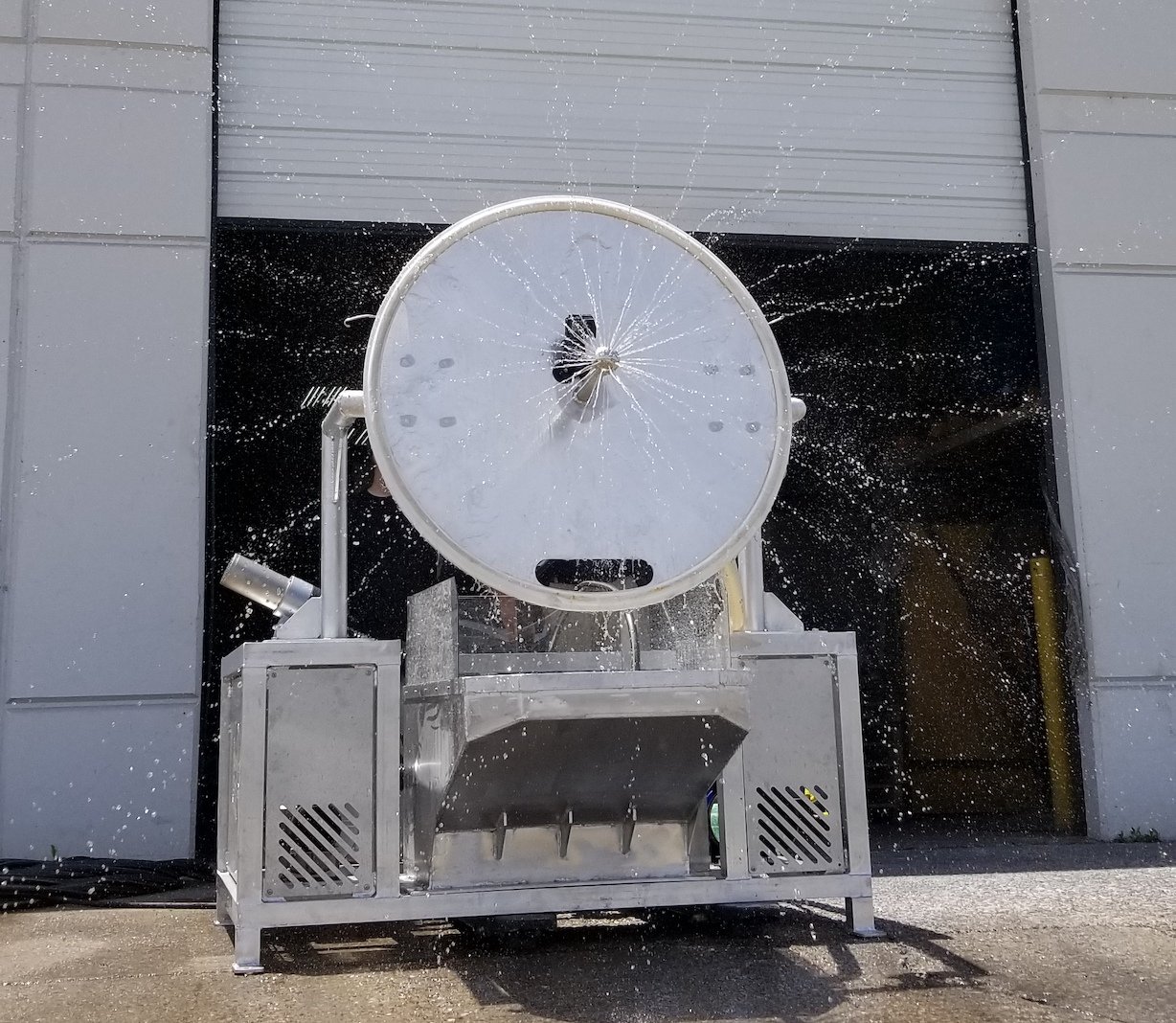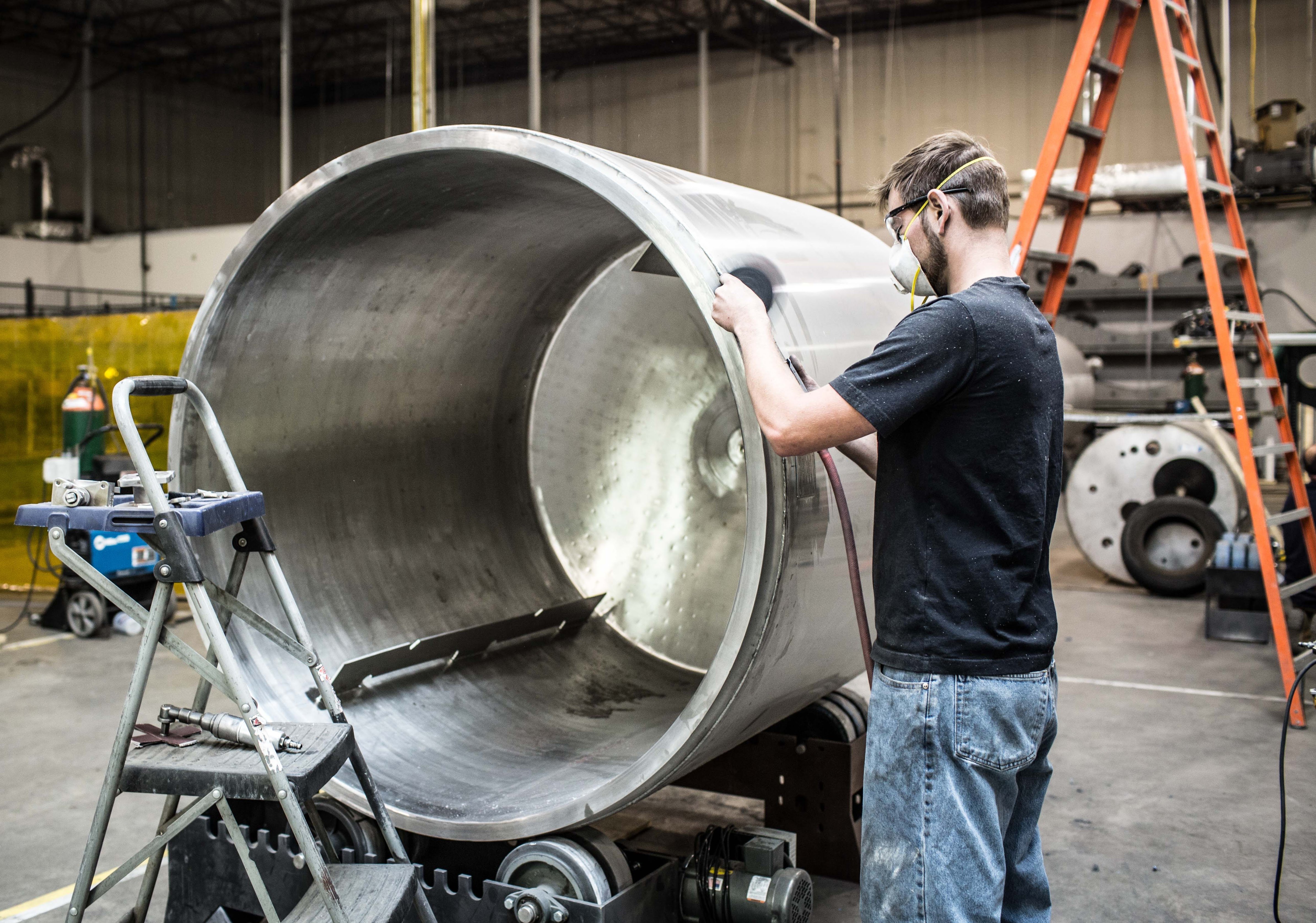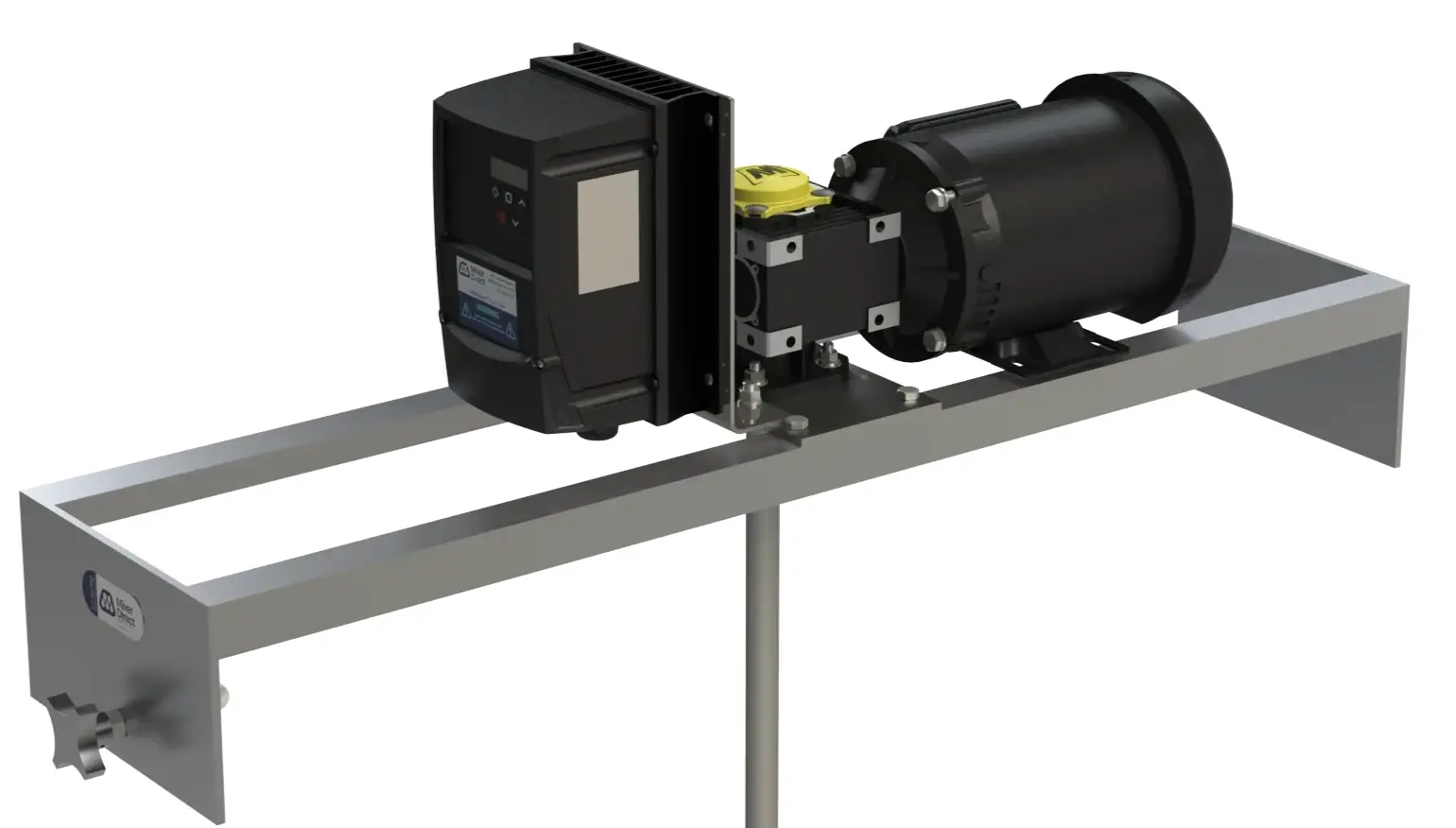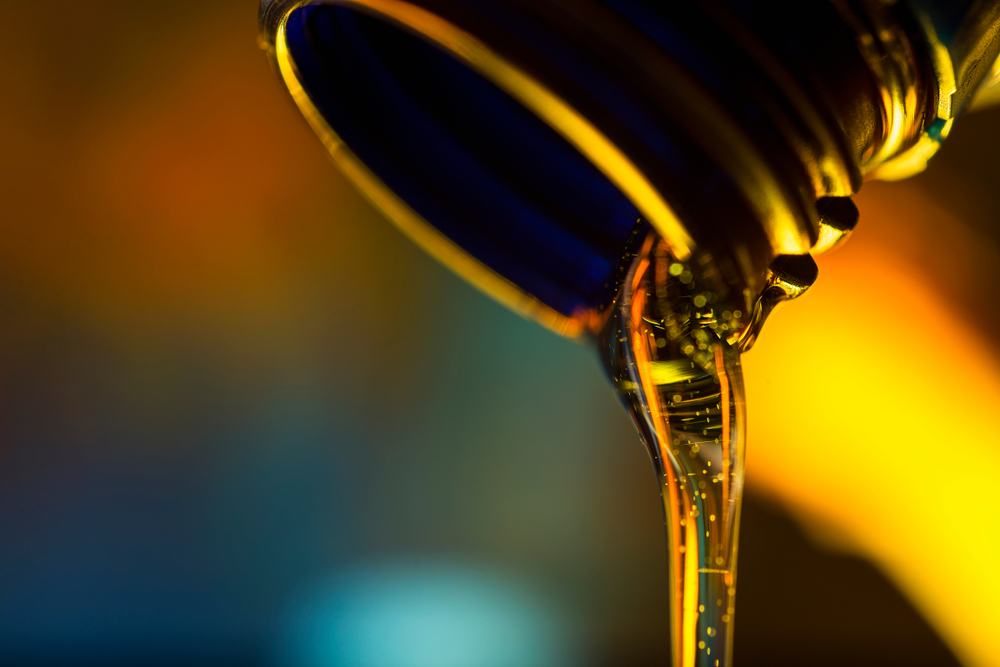How to Improve Your Mixing Process with Baffle Arrangement
One common issue that arises in mixing is an undesirable flow pattern. If your mixer is producing an undesirable flow pattern, you may have...

Spray balls are utilized in a variety of industries. For instance, pharmaceutical and food industry applications utilize spray balls to enhance regular cleaning of mixing vessels. They facilitate cleaning of the tanks by drenching the interior surfaces of the reservoir with hot water and chemicals at various velocities. The benefit of using spray balls in your process is that it allows your process equipment to be "CIP" or Clean-In-Place.
Clean-In-Place utilizes hot water, steam or special disinfectants to destroy and kill bacteria organisms that would interfere with the product. The process of using steam is referred to as sanitization-In-Place (SIP) or sterilize. Spray balls ensure that the process of cleaning is highly effective and that it can be designed and automated to allow for maximum coverage.
There are five factors that you should take into consideration during the cleaning process. They include time, temperature, pressure, required chemicals and the spray balls’ coverage. After you accurately define the parameters of the cleaning cycle, you can automate the whole cleaning process.
You should undertake the CIP process in a manner that allows for a thorough cleaning that should take place within a timeframe that enhances maximum production. Most cleaning cycles are, therefore, designed to be more efficient than would be necessary with huge volumes of liquids being sprayed at very high velocities.
Some of the spray balls have thick walls to ensure that each drilled hole becomes an efficient cleaning jet. Others are designed with thin walls to make sure that each hole acts as a divergent spray. Some are shaped like mushrooms to create room for other holes that will face upwards and clean the overhead surfaces.
Some sprays are fixed and will only spray particular areas while others can be detached thus offering more options. A rotating spray ball allows for a scrubbing like effect and provides better coverage. Fixed spray balls may not allow for maximum impact as far as pressure is concerned.
Check out these additional resources related to the pharmaceutical and food industries:
Hard Truth Distillery Case Study
Are Your Active Pharmaceutical Ingredients up to FDA Standard?
The pattern and diameter of the hole are designed to suit the particular system you are cleaning. The patterns will vary regarding the degree coverage they allow. Some will allow for 180-degree spray; others will have degree coverage of 270-degrees while others will allow coverage of up to 360-degrees. The most common type of material used to construct the spray balls is type 316L stainless steel. Majority of them contain a smooth electropolished surface of more than 20 Ra (0.5 μ).
Although the standard range patterns available include 360-degree, 270-degree and 180-degree, the drilling patterns can be fine-tuned to meet the increasing demand for efficiency in cleaning and minimizing waste. The spray balls can be drilled with specific target areas in mind. They can also be drilled to conform to specifications that you demand as a user. It will depend on the size of the vessel, the flow rate available and the type of cleaning.
Spray balls are made up of a sphere of a hollow sphere made from hygienic 316L stainless steel that has a hole precisely perforating it. It creates a series of jets of fluid spraying in all directions as water passes through under immense pressure. The jets strike the tank walls, spread out and flow downwards. This process allows for effective cleaning.
The spray ball has a simple design that has no moving parts. The design ensures that they are reliable and do not require regular maintenance. They are also cheap to buy making them an affordable option if you are interested in a reliable tank cleaning system.
The holes in the spray balls should be drilled to 2.0 mm (0.079 in). It would reduce the velocity to 18 ft/sec. This speed will be adequate for cleaning the system, but most importantly, it is safe and will not lead to spray ball erosion. You should also take further measures to mitigate the effects of the erosion. They include refinishing the tank.
The process allows for grinding of the eroded spots to get rid of the affected metal, polishing the metal surface to a finish of 20 Ra (0.5 μ) and electropolishing the ground spots. The whole system then needs to be de-rouged and taken through the process of repassivation using citric acid with an iron chelating agent known as ethylenediamine tetra acetic acid (EDTA). You should entrust De-rouging only to a reputable contractor.
The advantage with thick walled spray balls is that each hole ends up becoming a nozzle that produces a very efficient cleaning jet. The creation of many jets allows the liquid to reach further and improves the overall impact of the cleaning process.
The mushroom thick walled balls are designed to allow drilling of more holes facing upwards. They come in handy when CIP is expected to clean many vessels inlets. Mushroom balls are also ideal for applications that require most of the CIP to be directed back to the inlet of the spray ball.
The thin-walled spray is designed with simple head technology that enables a basic rinsing of the tank’s internal surface. The diameters of the balls range from 20mm to 94 mm with 360-degree and 180-degree up, down and horizontal spraying patterns. They can accommodate all flow rate requirements.
Thick walls have a better jet definition. They can be drilled to meet specific targets that allow the tank to pass Riboflavin coverage test. Since the balls are manufactured separately, their design can follow any pressure, flow and spray pattern design. They can also allow for fitting of Misting Nozzles used in washing Bursting Disks without damaging the fragile discs.
Spay balls can be handy for cleaning small and large tanks. Since the spraying occurs in indiscriminately in all directions, wetting is achieved instantaneously. This quality makes spray balls one of the most efficient devices that you can use in the cleaning cycle. They can remain valid even as primary cleaning stage systems continue to run for extended periods of time and might be the only viable choice in situations where safety reasons call for the precluding of rotary cleaners.
(Editor's note: This blog was originally published in September 2017 and was updated in April 2024 to include up-to-date information.)

One common issue that arises in mixing is an undesirable flow pattern. If your mixer is producing an undesirable flow pattern, you may have...

If your process materials are delivered and stored in Intermediate Bulk Containers (IBCs), you've likely encountered common issues like product...

What Is Viscosity? Viscosity is essentially a numerical value that can explain a fluid’s resistance to flow. It’s sort of like how much friction...